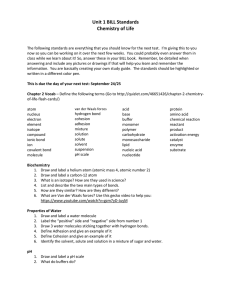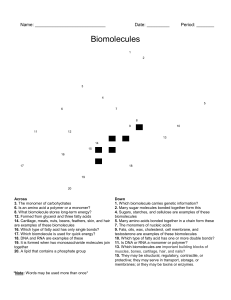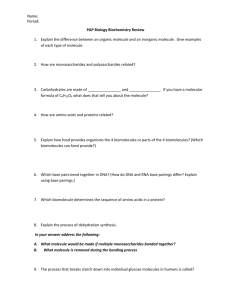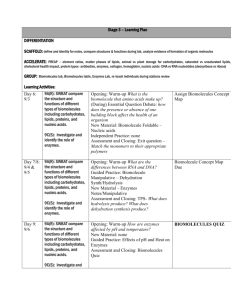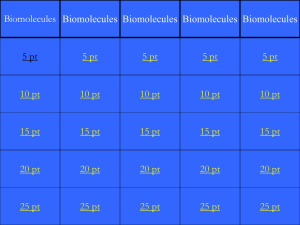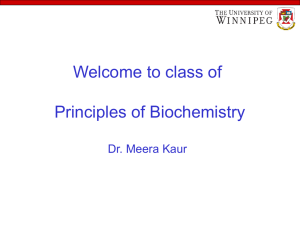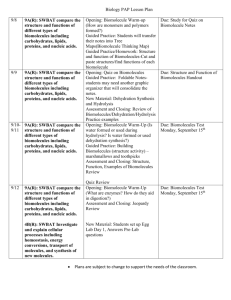Unit 2 Test Review
advertisement
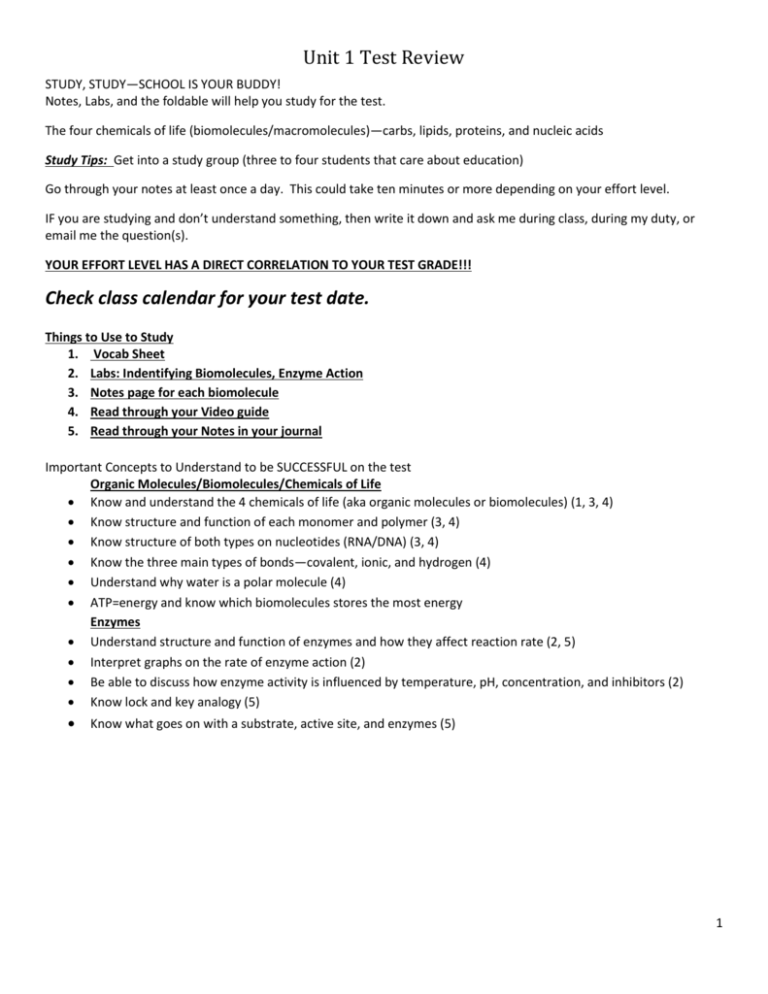
Unit 1 Test Review STUDY, STUDY—SCHOOL IS YOUR BUDDY! Notes, Labs, and the foldable will help you study for the test. The four chemicals of life (biomolecules/macromolecules)—carbs, lipids, proteins, and nucleic acids Study Tips: Get into a study group (three to four students that care about education) Go through your notes at least once a day. This could take ten minutes or more depending on your effort level. IF you are studying and don’t understand something, then write it down and ask me during class, during my duty, or email me the question(s). YOUR EFFORT LEVEL HAS A DIRECT CORRELATION TO YOUR TEST GRADE!!! Check class calendar for your test date. Things to Use to Study 1. Vocab Sheet 2. Labs: Indentifying Biomolecules, Enzyme Action 3. Notes page for each biomolecule 4. Read through your Video guide 5. Read through your Notes in your journal Important Concepts to Understand to be SUCCESSFUL on the test Organic Molecules/Biomolecules/Chemicals of Life Know and understand the 4 chemicals of life (aka organic molecules or biomolecules) (1, 3, 4) Know structure and function of each monomer and polymer (3, 4) Know structure of both types on nucleotides (RNA/DNA) (3, 4) Know the three main types of bonds—covalent, ionic, and hydrogen (4) Understand why water is a polar molecule (4) ATP=energy and know which biomolecules stores the most energy Enzymes Understand structure and function of enzymes and how they affect reaction rate (2, 5) Interpret graphs on the rate of enzyme action (2) Be able to discuss how enzyme activity is influenced by temperature, pH, concentration, and inhibitors (2) Know lock and key analogy (5) Know what goes on with a substrate, active site, and enzymes (5) 1 Practice Questions—This is what you can turn in for extra credit on the test. 1. What are the 4 groups of Biomolecules? a. b. c. d. 2. Complete the data table below Biomolecule Monomer Polymer 3. What are the functions of each of the Biomolecules listed in #1 above? a. b. c. d. 4. List the components of the following molecules; a. DNA (DEOXYRIBONUCLIEC ACID) 1a2a3ab. RNA (RIBONUCLEIC ACID) 1b2b3b5. What are Enzymes? 6. Which biomolecule are Enzymes made of? 7. What factors can affect the action of enzymes? 8. What is the name of the part of an enzyme that substances can bind onto? What are those substances called? Unit 1 Test Review STUDY, STUDY—SCHOOL IS YOUR BUDDY! Name the structures 9. 10. 11. 12. 13. 14. 3 15. 16. 16. Which biomolecule supplies the main source of energy in humans? 17. Define the following a. Starchb. Glycogenc. Cellulose18. Amino Acid is to protein as nucleotide is to 19. Monosaccharide is to carbohydrate as amino acid is to 20. Glucose is to carbohydrates as amino acid is to 21. What are some characteristics that DNA controls?
